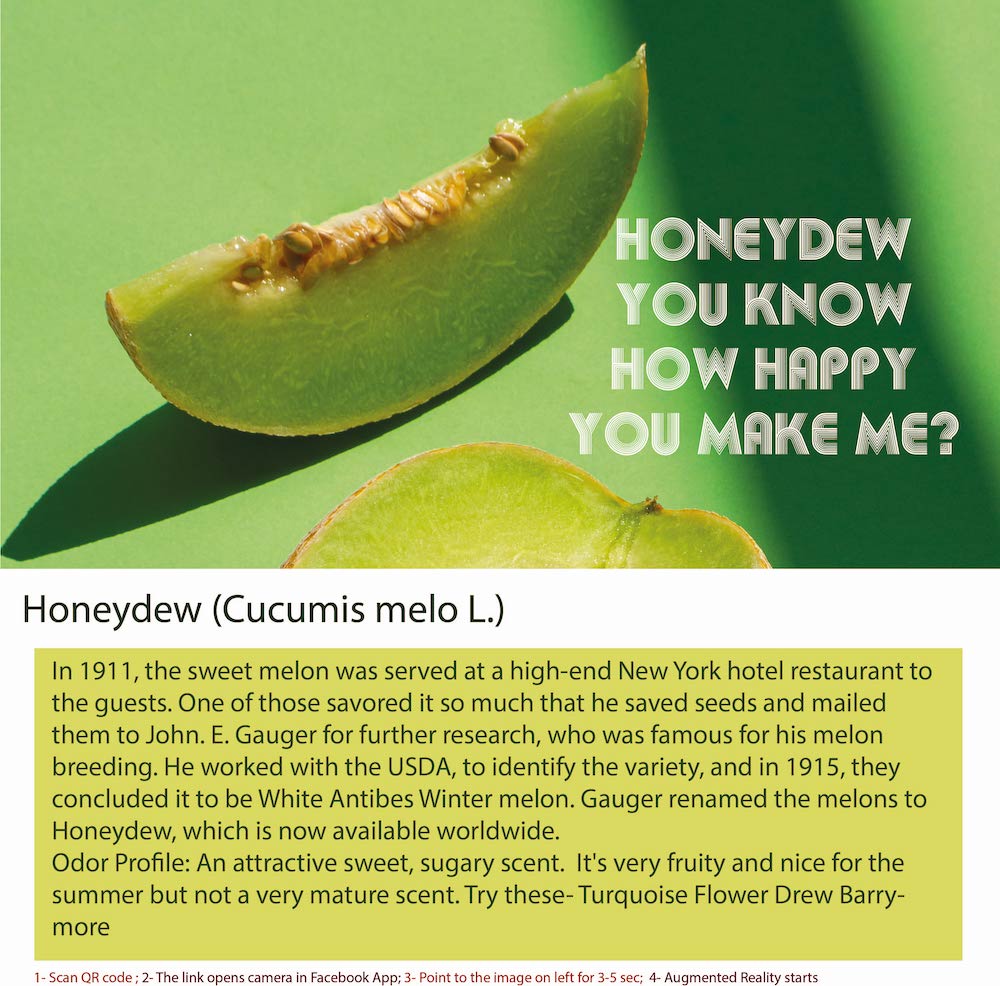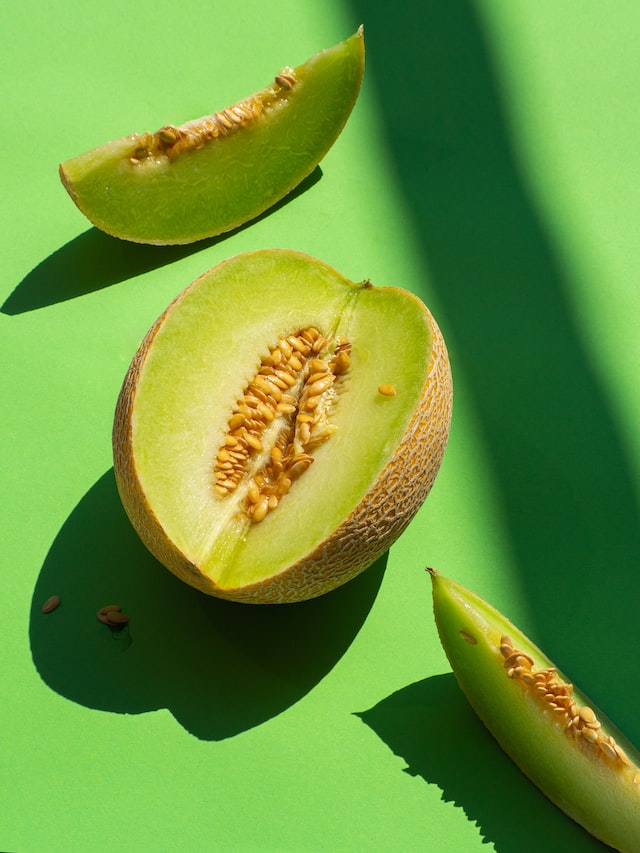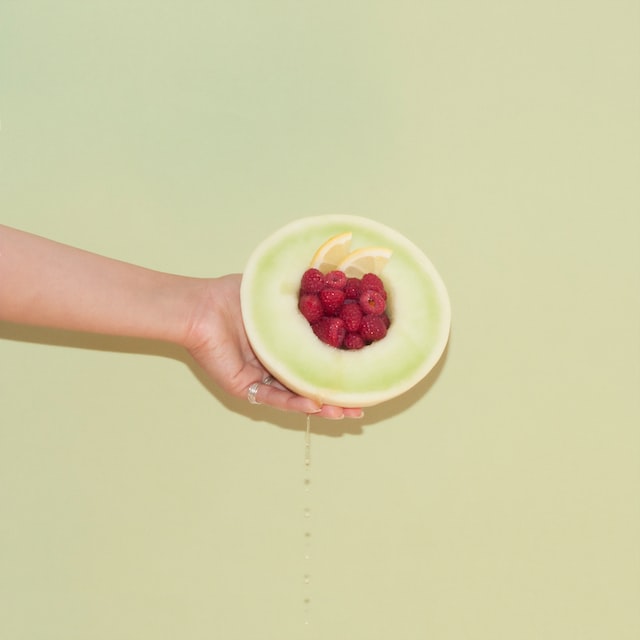Explore Honeydew Fruity Sweet Perfume Material at Scentopia Singapore
Honeydew: The Sweet and Succulent Melon of Delights - From Culinary Pleasures to Fun Crazy Facts
Honeydew, a juicy and refreshing melon, is a delightful and versatile fruit that brings a burst of sweetness to various aspects of human life. This succulent gem holds a prominent place in various domains, including perfumes, fragrance, therapeutic oils, food, medicinal systems, history, and even fun crazy facts. In this article, we embark on a journey to explore the captivating allure of honeydew, uncovering its diverse uses and intriguing characteristics that have delighted people for ages.
1. Honeydew in Perfumes and Fragrance
The subtly sweet and fresh aroma of honeydew has inspired perfumers to incorporate its essence into fragrances. While honeydew extract itself is not commonly used in perfumery, certain fragrances aim to capture the essence of its juicy and uplifting scent, evoking a sense of lightness and joy.
2. Honeydew in Therapeutic Oils
Honeydew is not commonly used as a primary source of therapeutic oils in aromatherapy. However, certain essential oils with potential therapeutic benefits are derived from plants related to the melon family.
3. Honeydew in Culinary Delights
Honeydew is treasured for its culinary uses and is a beloved ingredient in various dishes. It is enjoyed fresh as a refreshing snack, added to fruit salads, used in smoothies, and used to make delicious desserts and sorbets.
4. Honeydew in Medicinal Systems
Honeydew, like other melons, is rich in vitamins and minerals, contributing to overall well-being and hydration. It is a hydrating and nourishing fruit that is beneficial for the body, especially during hot weather.
5. Historical Significance of Honeydew
Honeydew melons have been cultivated and enjoyed for centuries, and they hold cultural significance in various regions around the world. They are prized for their sweet taste and ability to provide hydration during warm seasons.
6. Fun and Crazy Facts about Honeydew
a. The Name "Honeydew": The name "honeydew" comes from the melon's sweet and honey-like flavor.
b. Honeydew and Cucumbers: Honeydew melons are related to cucumbers and belong to the same plant family, Cucurbitaceae.
c. Honeydew as a Fruit Salad Staple: Honeydew is a popular ingredient in fruit salads, adding a burst of sweetness and texture to the mix.
d. Sweet and Low-Calorie: Honeydew is naturally low in calories and makes for a healthy and refreshing snack option.
e. Serving Style: Honeydew is often served in slices or cubes, making it easy to enjoy its juicy goodness.
Honeydew, with its juicy sweetness and diverse applications, stands as a delightful melon cherished in culinary creations and beyond. From fragrances that evoke uplifting and light-hearted feelings to intriguing fun facts, honeydew continues to captivate and bring a taste of summer to our lives. Whether savored fresh for its hydrating properties or appreciated for its potential role in fragrances, honeydew represents the refreshing and nourishing fruits that enrich our culinary experiences and well-being. As we celebrate honeydew's contributions to various aspects of human life, it stands as a testament to the enduring appeal of sweet treasures from nature and their ability to enliven our senses and culinary delights.
Honeydew, a juicy and refreshing melon, is a delightful and versatile fruit that brings a burst of sweetness to various aspects of human life. This succulent gem holds a prominent place in various domains, including perfumes, fragrance, therapeutic oils, food, medicinal systems, history, and even fun crazy facts. In this article, we embark on a journey to explore the captivating allure of honeydew, uncovering its diverse uses and intriguing characteristics that have delighted people for ages.
1. Honeydew in Perfumes and Fragrance
The subtly sweet and fresh aroma of honeydew has inspired perfumers to incorporate its essence into fragrances. While honeydew extract itself is not commonly used in perfumery, certain fragrances aim to capture the essence of its juicy and uplifting scent, evoking a sense of lightness and joy.
2. Honeydew in Therapeutic Oils
Honeydew is not commonly used as a primary source of therapeutic oils in aromatherapy. However, certain essential oils with potential therapeutic benefits are derived from plants related to the melon family.
3. Honeydew in Culinary Delights
Honeydew is treasured for its culinary uses and is a beloved ingredient in various dishes. It is enjoyed fresh as a refreshing snack, added to fruit salads, used in smoothies, and used to make delicious desserts and sorbets.
4. Honeydew in Medicinal Systems
Honeydew, like other melons, is rich in vitamins and minerals, contributing to overall well-being and hydration. It is a hydrating and nourishing fruit that is beneficial for the body, especially during hot weather.
5. Historical Significance of Honeydew
Honeydew melons have been cultivated and enjoyed for centuries, and they hold cultural significance in various regions around the world. They are prized for their sweet taste and ability to provide hydration during warm seasons.
6. Fun and Crazy Facts about Honeydew
a. The Name "Honeydew": The name "honeydew" comes from the melon's sweet and honey-like flavor.
b. Honeydew and Cucumbers: Honeydew melons are related to cucumbers and belong to the same plant family, Cucurbitaceae.
c. Honeydew as a Fruit Salad Staple: Honeydew is a popular ingredient in fruit salads, adding a burst of sweetness and texture to the mix.
d. Sweet and Low-Calorie: Honeydew is naturally low in calories and makes for a healthy and refreshing snack option.
e. Serving Style: Honeydew is often served in slices or cubes, making it easy to enjoy its juicy goodness.
Honeydew, with its juicy sweetness and diverse applications, stands as a delightful melon cherished in culinary creations and beyond. From fragrances that evoke uplifting and light-hearted feelings to intriguing fun facts, honeydew continues to captivate and bring a taste of summer to our lives. Whether savored fresh for its hydrating properties or appreciated for its potential role in fragrances, honeydew represents the refreshing and nourishing fruits that enrich our culinary experiences and well-being. As we celebrate honeydew's contributions to various aspects of human life, it stands as a testament to the enduring appeal of sweet treasures from nature and their ability to enliven our senses and culinary delights.
To experience augmented reality, please open the Facebook-app using QR code and point to the image below
Unveiling the Essence of Honeydew Fragrance
Honeydew is a type of melon that is known for its sweet, juicy flesh and green skin. It is a member of the cucumber family, and is typically round or oval in shape. The honeydew melon is typically harvested when it is fully ripe, at which point it will have a smooth, creamy-white flesh that is sweet and delicious. They are rich in vitamin C, Vitamin B6, and potassium, also low in calories.
Honeydew melons are often eaten fresh, but can also be used in a variety of other ways, such as in salads, smoothies, or as a dessert. They can be paired with other fruits and ingredients to create unique and delicious flavors. Some common pairings include mint, lime, and ginger.
In addition to being a tasty fruit, honeydew melons are also believed to have a number of health benefits, including hydration, improved digestion, and a boost to the immune system.
Honeydew melons are often eaten fresh, but can also be used in a variety of other ways, such as in salads, smoothies, or as a dessert. They can be paired with other fruits and ingredients to create unique and delicious flavors. Some common pairings include mint, lime, and ginger.
In addition to being a tasty fruit, honeydew melons are also believed to have a number of health benefits, including hydration, improved digestion, and a boost to the immune system.
Crafting Captivating Scents with Fruity Sweet Perfume Materials
Honeydew fun facts:
Here are some fun facts about honeydew melons:
Here are some fun facts about honeydew melons:
- The honeydew melon is native to Africa, but is now widely grown in many parts of the world,including the United States, Spain, and China.
- Honeydew melons are typically picked when they are fully ripe and ready to eat, but they will not continue to ripen once they are picked.
- The name "honeydew" comes from the sweet, honey-like nectar that is often found on the skin of the melon.
- Honeydew melons are a good source of vitamin C, which helps to boost the immune system and promote healthy skin.
- Honeydew melons are often used in savory dishes as well as sweet dishes, as the mild taste and texture can complement a variety of flavors.
- Honeydew melons can be used to make a delicious sorbet or ice cream.
- The honeydew melon is a good source of antioxidants, which can help to protect against the damage caused by free radicals in the body.
- Unlike other types of melons, the honeydew melon has a relatively long shelf life, and can be stored for several weeks in the refrigerator before it starts to spoil.
Elevate Your Perfume Creations with Scentopia Singapore
The honeydew melon, also known as the white Antibes, is believed to be native to Africa, and has been cultivated for thousands of years. The ancient Egyptians were known to have grown honeydew melons, and they were considered a symbol of fertility and rebirth. The fruit was also highly prized in ancient Greece and Rome, and was often given as a gift to royalty and the wealthy.
The honeydew melon was first introduced to the United States in the early 20th century, and is now widely grown in many parts of the country, as well as in other countries such as Spain, Turkey, Chile, and China. Today, honeydew melons are a popular fruit that are enjoyed for their sweet, juicy flesh and refreshing taste.
Honeydew melons were not widely known in the US until the 1920s. They were primarily grown in California. The honeydew melon became popular and widely available in the US in the 1990s.
Honeydew melons are also commonly used in the culinary world, and are a popular ingredient in salads, smoothies, and other dishes. They are also used to make a variety of sweet and savory recipes, such as sorbets, ice creams, and grilled honeydew melon skewers.
The honeydew melon was first introduced to the United States in the early 20th century, and is now widely grown in many parts of the country, as well as in other countries such as Spain, Turkey, Chile, and China. Today, honeydew melons are a popular fruit that are enjoyed for their sweet, juicy flesh and refreshing taste.
Honeydew melons were not widely known in the US until the 1920s. They were primarily grown in California. The honeydew melon became popular and widely available in the US in the 1990s.
Honeydew melons are also commonly used in the culinary world, and are a popular ingredient in salads, smoothies, and other dishes. They are also used to make a variety of sweet and savory recipes, such as sorbets, ice creams, and grilled honeydew melon skewers.
The Sweet Aroma of Honeydew
The scent of a honeydew melon is typically described as sweet, fresh, and slightly musky. When the melon is fully ripe, it will emit a sweet aroma that is similar to the scent of honey, which is where the fruit gets its name. The scent of a honeydew melon can also be described as having a subtle, grassy undertone. Some people also describe a slight cucumber-like aroma in honeydew melons. The scent of a honeydew melon can be a good indicator of its ripeness and sweetness. A strong sweet aroma is a good sign that the melon is ripe and ready to eat.
Fruity Notes for Irresistible Perfumes
There are some perfumes that are inspired by the scent of honeydew melon, and may use other ingredients such as cucumber or melon to create a similar scent. Some examples of perfume brands that have honeydew scented fragrances are:
- Jo Malone: Jo Malone's "Cucumber and Honeydew" cologne is a light and refreshing scent that features notes of cucumber and honeydew, as well as melon, white lily, and jasmine.
- Bath and Body Works: Bath and Body Works has a line of body care products called "Honeydew Melon and Cucumber" that features a light, fresh fragrance with notes of honeydew, cucumber and a touch of green apple
- Nest: Nest Fragrances has a perfume called "Cucumber & Honeydew" that features a blend of cucumber, honeydew melon, and watery greens.
Join Scentopia, Sentosa's latest tourist attraction wonderful orchid scent crafting, fragrance tour, bridal shower or corporate team building which includes perfume making onsite and offsite, beach activities and more. We also serve primary school learning journey, secondary students and pupil on industrial excursions. Know more about our orchids perfume bar or therapeutic orchid scents and other wellness aromas. Conatct Perfume workshop or book a scent crafting session here.





